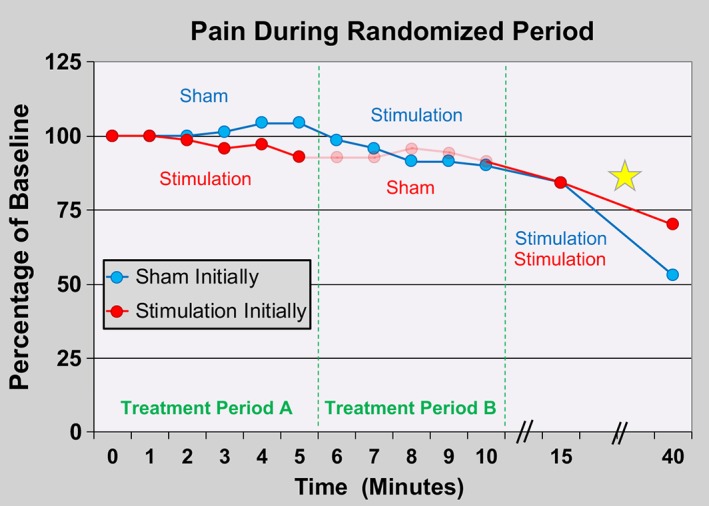Figure 2.

Effects of percutaneous peripheral nerve stimulation of the femoral nerve on surgical pain within the recovery room immediately following anterior cruciate ligament reconstruction with a patellar autograft. Subjects were randomized to receive 5 min of either electric current (“stimulation”; n = 5) or sham (n = 5) in a double‐masked fashion (Treatment Period A) followed by a 5‐min crossover period (Treatment Period B). Stimulation was subsequently delivered to all subjects (n = 10) for 30 additional minutes. Data presented as means at each time point with the original pain scores measured using the numeric rating scale. Given the relatively small sample size, statistics were not applied to the data. The group that received stimulation during the initial treatment has data shown in ghost during the subsequent period because peripheral nerve stimulation has a “carryover” effect and these data points are therefore difficult to interpret. The yellow star indicates that five subjects initiated their local anesthetic perineural infusion during this period of time.
